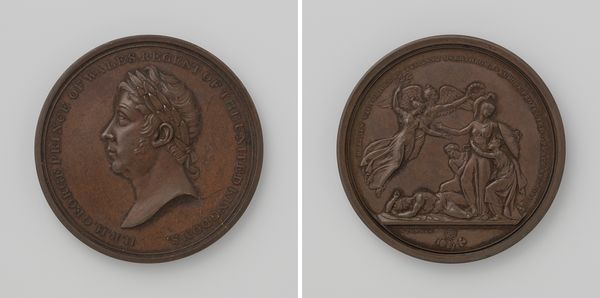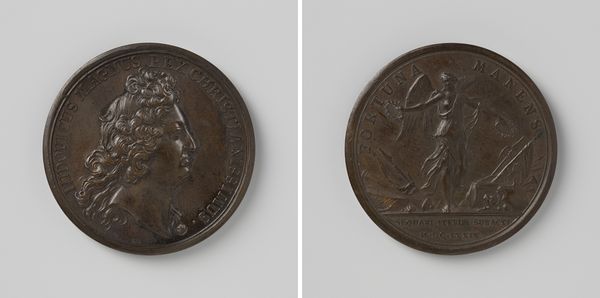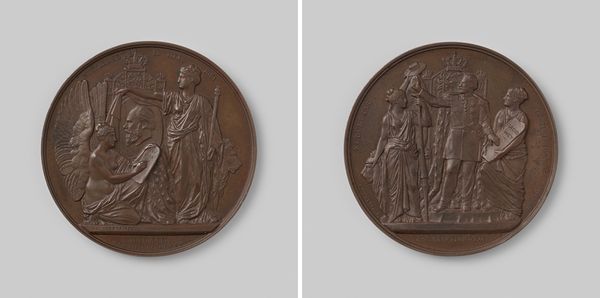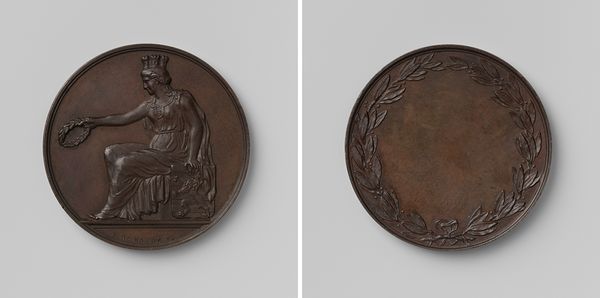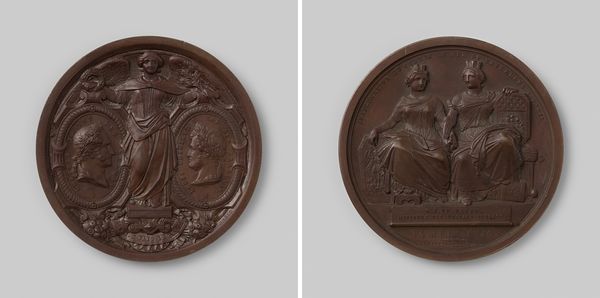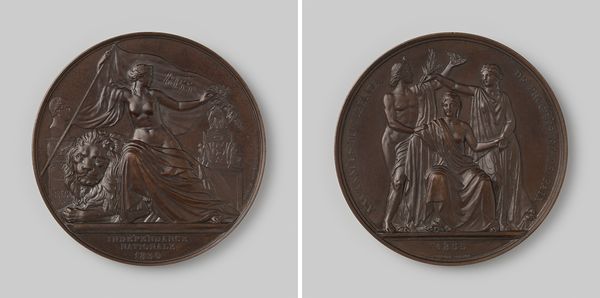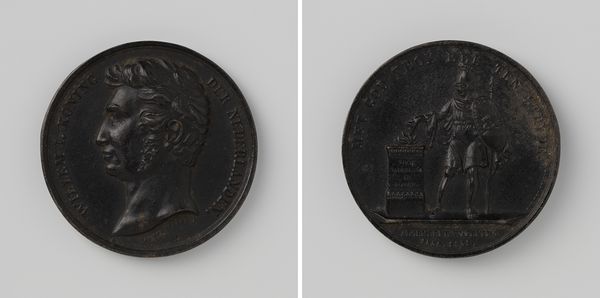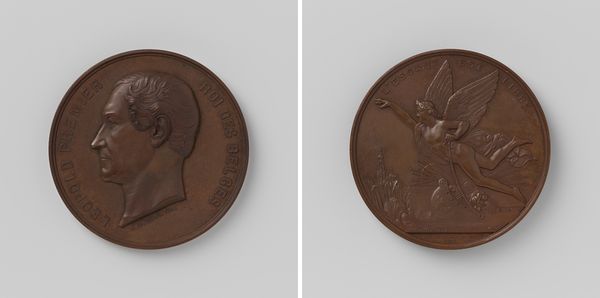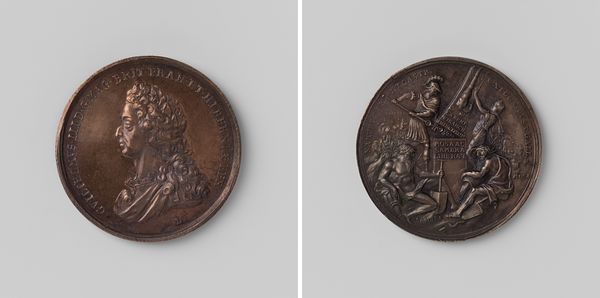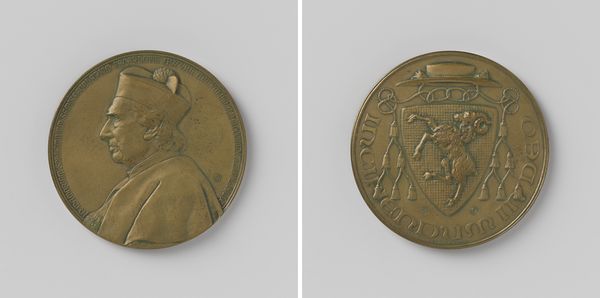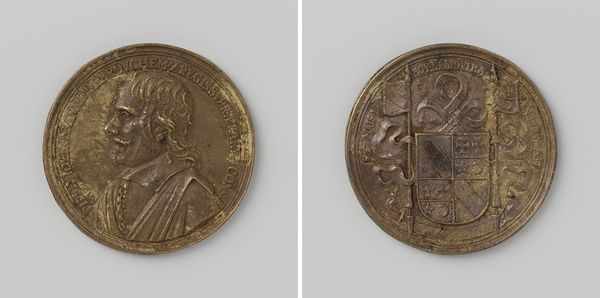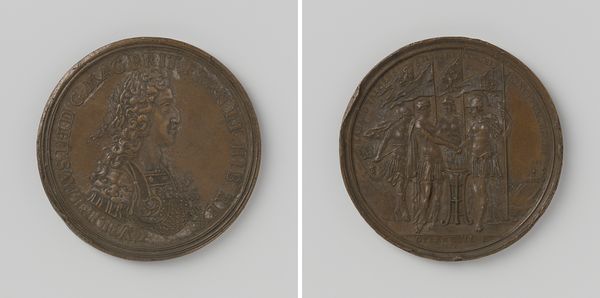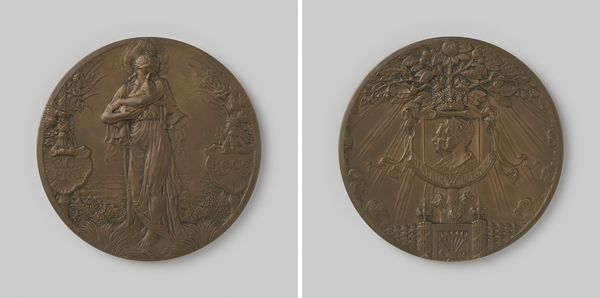
Tentoonstelling van Landbouw te Brussel, ter ere van Leopold I, koning der Belgen 1848
0:00
0:00
relief, bronze, sculpture
#
portrait
#
neoclacissism
#
sculpture
#
relief
#
bronze
#
sculpture
#
history-painting
Dimensions: diameter 5.2 cm, weight 62.56 gr
Copyright: Rijks Museum: Open Domain
Editor: Here we have a bronze relief sculpture made in 1848 by Leopold Wiener titled "Tentoonstelling van Landbouw te Brussel, ter ere van Leopold I, koning der Belgen," commemorating an agricultural exhibition in Brussels. It seems like an official commemorative piece. I'm curious about the choice of bronze here, what’s your read of the material presence of this work? Curator: The bronze is quite significant. Its durability speaks to the enduring power and the commemorative intention inherent in representing Leopold I. More interestingly, bronze production during this period relied on specific labor practices and global trade networks for raw materials, therefore embodying the very economic and colonial systems at play. Editor: Oh, that's interesting. So the material itself tells a story beyond just its aesthetic qualities. How does the depiction of the figures relate to that story? Curator: Consider the female figures flanking what seems to be a blank central medallion, a frame where an allegorical depiction of the Belgian nation could’ve taken place. The blank is rather telling, no? It encourages a look at the larger industry in Belgian nation-making through its use of material in relief sculpture and neoclassical style. And perhaps we should think about agriculture itself – its products, processes and labor? Editor: Right, so rather than seeing the agriculture exhibition itself, the object encourages me to explore the economics *behind* the show. Does that connection of agricultural commodities and labor impact your viewing? Curator: Absolutely! The relief aestheticizes labor by glossing over the labor of exploited people for what is an aesthetic, neoclassical vision. Also, reflect on what wasn't rendered but could've been. That opens a portal to thinking through colonial labor and extraction that enriched Leopold I and Belgium itself at the expense of the many. What will *you* remember most when looking at it? Editor: I see the piece more critically now, looking at the hidden labor that made it all possible rather than just a celebratory monument. Curator: Exactly. By analyzing materials and production, we unravel the intricate web of power relations embedded within it.
Comments
No comments
Be the first to comment and join the conversation on the ultimate creative platform.
